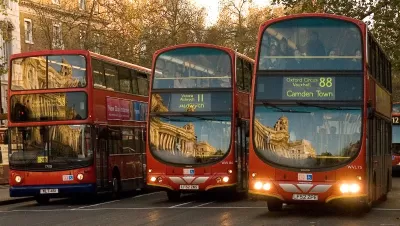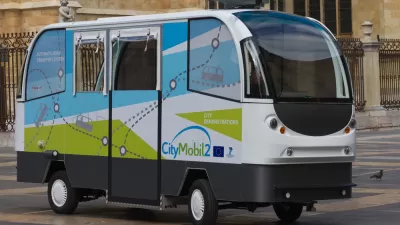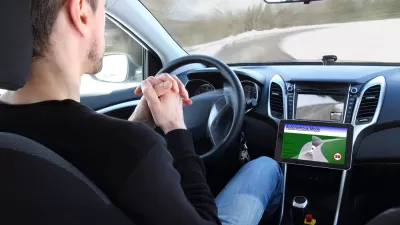An article by Greg Lindsay and Anthony Townsend takes the shine off of self-driving cars and identifies a preferable avenue for autonomous vehicle technology: buses.

"The autonomous car will not be nearly as autonomous as its champions would have you believe," begins the article for Quartz by Greg Lindsay and Anthony Townsend.
After listing the many obstacles autonomous cars will have to overcome before they can be introduced into the market—much less adopted by the public—Lindsay and Townsend suggest a different focus: "…Google’s greatest shortcoming isn’t its technology, but how it has defined America’s transportation challenge. Our public transportation systems are running near historic highs in ridership, while using technology and business models from the 19th century. We should be upgrading these, not trying to fix America’s auto-dependent suburbs."
One upgrade that could "solve some of the most challenging transportation problems facing American cities" according to the article: platoons of buses traveling safely only feet apart at top speeds.
FULL STORY: Forget self-driving cars; we should be focusing on self-driving buses

Manufactured Crisis: Losing the Nation’s Largest Source of Unsubsidized Affordable Housing
Manufactured housing communities have long been an affordable housing option for millions of people living in the U.S., but that affordability is disappearing rapidly. How did we get here?

Americans May Be Stuck — But Why?
Americans are moving a lot less than they once did, and that is a problem. While Yoni Applebaum, in his highly-publicized article Stuck, gets the reasons badly wrong, it's still important to ask: why are we moving so much less than before?

Using Old Oil and Gas Wells for Green Energy Storage
Penn State researchers have found that repurposing abandoned oil and gas wells for geothermal-assisted compressed-air energy storage can boost efficiency, reduce environmental risks, and support clean energy and job transitions.

Updating LA’s Tree Rules Could Bring More Shade to Underserved Neighborhoods
A new USC study finds that relaxing Los Angeles’ outdated tree planting guidelines could significantly expand urban tree canopy and reduce shade disparities in lower-income neighborhoods, though infrastructure investments are also needed.

California's Canal Solar Projects Aim to Conserve Resources and Expand Clean Energy
California’s Project Nexus has begun generating electricity from solar panels installed over irrigation canals, with researchers and state agencies exploring statewide expansion to conserve water and boost clean energy production.

HHS Staff Cuts Gut Energy Assistance Program
The full staff of a federal program that distributes heating and cooling assistance for low-income families was laid off, jeopardizing the program’s operations.
Urban Design for Planners 1: Software Tools
This six-course series explores essential urban design concepts using open source software and equips planners with the tools they need to participate fully in the urban design process.
Planning for Universal Design
Learn the tools for implementing Universal Design in planning regulations.
Heyer Gruel & Associates PA
City of Moreno Valley
Institute for Housing and Urban Development Studies (IHS)
City of Grandview
Harvard GSD Executive Education
Salt Lake City
NYU Wagner Graduate School of Public Service
City of Cambridge, Maryland





























